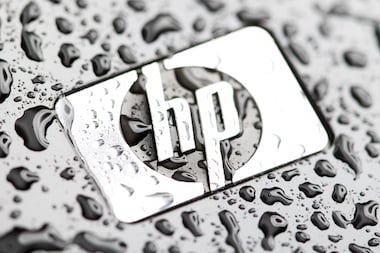Where next for Hewlett-Packard?

As the Silicon Valley veteran announces a further 30,000 job cuts, Insights takes a look at what has driven this latest round of redundancies, and whether they will be enough to make the company competitive once more
Jermaine HaughtonAfter announcing 55,000 redundancies earlier this year, computer hardware giant Hewlett-Packard (HP) has revealed another 30,000 jobs will be axed before the corporation completes the planned separation of its business.
With the Silicon Valley veteran undergoing rapid structural changes to compete with the digital and portable device-focused market, HP’s bosses have had to make difficult decisions when streamlining the business. But with the technology industry being a cut-throat and competitive arena, will this latest action be enough to rejuvenate HP’s fortunes?
For most employees and investors, the news of further job cuts are unlikely to be a surprise after HP revealed in May that its restructuring costs of splitting its consulting business Hewlett Packard Enterprise (HPE) from the consumer-focused PC and printer division by November 2015 is expected to cost the organisation around $2 billion (£1.29bn).
By cutting 10% of its workforce in this latest round of redundancies, HP says it will save $2.7bn in annual costs. The corporation has not specifically outlined where these cuts will fall. However, several news reports have suggested many of the losses will come in HPE and the combined business currently employs 15,000 staff in the UK.
Under the corporation’s new structure, HP chairman and chief executive Meg Whitman has promised increased and more-focused investment in the streamlined HPE unit, which will sell servers and software that businesses and government agencies use to run their operations.
But as a result of the extensive resources and money needed to build and support the two new publically-traded HP companies, thousands of staff have been sacrificed.
"The number is sadly larger than some people might have expected, but I think it's a reflection of how much trouble HP has been having with its services," said Charles King, analyst at the Silicon Valley IT consulting firm Pund-IT.
Earlier this month, Business Insider reported how HP was using partnerships with contract work agency Adecco and IT consultancy Ciber to move employees off their payroll as permanent staff and hire them back as contractors. This infuriated many employees who had to accept large pay cuts and fewer benefits as well as a loss of seniority and annual leave allowance.
Do good times lay ahead?
The company has suggested it is finally nearing the end of a brutal period of layoffs. At a meeting for Wall Street analysts, Whitman said: "We've done a significant amount of work over the past few years to take costs out and simplify processes and these final actions will eliminate the need for any future corporate restructuring."
On the face of it, HP is still one of the world’s largest technology companies. But since peaking during the dotcom boom at the turn of the century, the corporation has severely stagnated following a series of ill-judged acquisitions (including Compaq for $25bn in 2002), a bloated management structure and, most importantly, a failure to adapt to customer demand for portable devices rather than the traditional desktop PC.
Demoted from the position as the world's leading PC manufacturer in 2012 by Chinese firm Lenovo, HP’s share value has dropped by 60% since 2000 and revenues fell to $111.5bn last year, compared to the $112.3bn recorded in 2013 and $120.5bn in 2012.
By separating its consumer and B2B departments, HP is hoping to have a better organisational focus on the demands for each business, as well as being leaner and better positioned to compete in new markets. “When we were one company we were always trying to fit all of the pieces into an overall strategy,” Whitman admitted.
Under the new structure, the customer-focused PC and printer manufacturer HP Inc. will now focus on returning cash to shareholders while expanding into new markets such as 3-D printing. On the other hand, the business-focused HPE will bolster its data analytics, cloud computing, security and application modernization services.
“What they’re trying to do is get that business’s cost basis down as they enter their first year as a split organization,” said Crawford Del Prete, chief research officer with IDC, an industry research firm.
Furthermore, the company wants to have a more diverse portfolio of clients, moving away from its traditional reliance on a handful of extremely profitable customers. In 2013, three accounts made up 65% of the operating profit at HP’s enterprise services group bot now no single account is responsible for more than 10%.
The changes HP is making send a huge message to employees, investors and competitors alike, that they may be putting themselves in a position to finally be competitive again. Only time will tell if enough has been done.
Want to learn the secrets of fast business growth? Then sign up for the latest webinar from CMI and Citrix. In this webinar Jane Gomez takes us through the three key areas that the managers of the best fast growth businesses embrace, and the things you should be thinking about now.

Press & Media Enquiries
For more information or to request interviews, contact CMI's Press Team on 020 7421 2705 or email press.office@managers.org.uk


